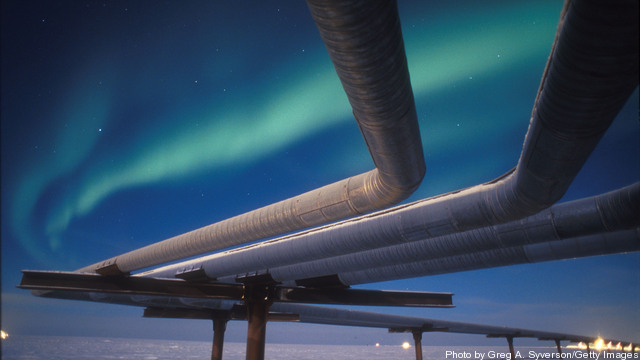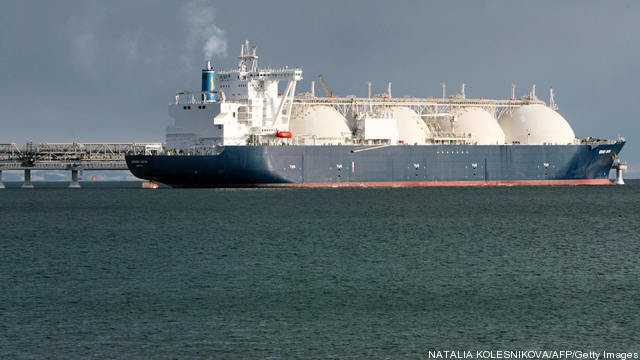One of the most frightening scenes from the financial crisis unfolded in the staid environs of the Commodity Futures Trading Commission’s Washington offices, where the regulators charged with monitoring derivatives trade gathered together the heads of commodity trading from recently shamed Wall Street giants like Goldman Sachs and Morgan Stanley. The CFTC was a comparatively… Keep reading →
BP
Sign up and get Breaking Energy news in your inbox.
We will never sell or share your information without your consent. See our privacy policy.Proponents of a “commercial maturity test” for LNG export projects suggest that it could help to bridge the gap between those who support and those who oppose allowing the market to determine how much natural gas the US will sell abroad. But changing the rules mid-stream could give some project developers an edge, and even… Keep reading →

Moody’s analysts are have weighed in on prospects for liquefied natural gas (LNG) exports from the US, forecasting that chemical companies and utilities could see some negative impact from higher domestic natural gas prices, but not enough to bring down their credit ratings.
Moody’s expects US LNG export capacity to rise to 6.3 billion cubic feet per day by 2020 – equivalent to 178.4 million cubic meters per day, compared with global exports totaling 330.8 billion cubic meters per day in 2011, according to BP’s Statistical Review of World Energy. “We do not expect the volume of exports from North America will have a significant impact on the global LNG trade during this decade,” the rating agency said in a report, The Prospect of US LNG Exports Influences Pricing and Gas Markets Worldwide. Keep reading →

Tax reform in Alaska promises to attract more oil and gas investment, but even for an established player in the state such as ConocoPhillips, getting substantial new production onstream.
Alaska’s state legislature approved oil tax legislation reform earlier this month designed to establish a more attractive investment climate for oil and gas producers. Companies such as ConocoPhillips, ExxonMobil and BP have been calling for changes to Alaska’s fiscal system for years, arguing that it deters investment in the state’s substantial resources. Keep reading →

Devon Energy chief executive John Richels is confident that US President Barack Obama’s administration will approve the the Keystone XL pipeline, but he expects the gap between prices for Canadian heavy oil and US benchmark West Texas Intermediate (WTI) to narrow even if the pipeline never gets built.
“Keystone XL is going to be approved,” Richels told attendees of the Independent Petroleum Association of America’s Oil and Gas Investment Symposium in New York on Tuesday. “From a national point of view it makes no sense for the President not to approve that, and buy more oil from Venezuela and the Middle East.” The Keystone XL pipeline, as envisaged, would transport up to 830,000 barrels per day of Canadian oil from Alberta to US refineries. Keep reading →

The long-running dispute between Iraq’s central government in Baghdad and Kurdistan Regional Government leaders in Erbil entered a new phase when the Iraqi Parliament last week passed a 2013 budget that allocated a fraction of the money requested by the KRG. A bulk of this funding is used to pay oil companies operating in the semi-autonomous region.
“In a blatant stiff-arm to the Kurds, the budget allocates just $646 million to cost recovery for Kurdistan Regional Government oil contractors — a figure that covers only around two months’ worth of the crude that Erbil was slated to provide this year,” Michael Knights said in a Policy Alert from the Washington Institute for Near East Policy, a think tank. The KRG reportedly requested $3.5 billion. Keep Reading →

Your favorite Exxon station is very likely not owned or operated by Exxon and the same is true for the rest of the major oil companies. The Chevron’s and BP’s of the world largely distanced themselves from the branded retail gasoline business following the mega-mergers of the late 1990’s and early 2000’s due to financial and regulatory factors.
In fact, these businesses – that most people still refer to as gas stations – are now thought of by the industry as convenience stores that sell motor fuels. The downstream segment – refining and marketing – of the oil and gas business has been marginally profitable for decades. But the vertically integrated model first championed by John D. Rockefeller’s Standard Oil remains attractive to the majors because owning refineries provides a guaranteed market for their often highly-profitable upstream businesses of finding and developing oil and gas. The upstream was often thought of as subsidizing the downstream, as Steve Coll described it in his book about ExxonMobil, “Private Empire.” Keep reading →

The World Economic Forum is widely known for the glittering array of its high-profile attendees and more recently for its role in annually highlighting the response of global elites to the economic crisis that accelerated in 2008 and has played out in the euro crisis and grinding developed-economy recessions since.
Issues of national security, of globalization and of the role of business in increasingly transparent societies have been raised but have attracted less attention; this year, attendees say, that is likely to change. Keep reading →

It appears increasingly likely that Venezuelan President Hugo Chavez will not return to power following his latest cancer treatment in December and analysts are considering the implications of a post-Chavez regime for one of the largest crude oil producers in the world.
Venezuela holds some of the world’s largest oil reserves and is the second largest Opec oil exporter to the US. Oil revenue accounts for a bulk of the government’s income and has largely been used to fund Chavez’s wide-ranging social programs. But the country’s oil industry – which is essentially state-owned company PDVSA – has been struggling with declining production rates at mature fields, along with other problems. Keep reading →
 Shell spent billions of dollars and significant political capital to obtain the licenses and approvals required to explore for oil and gas off the coast of Alaska.
Shell spent billions of dollars and significant political capital to obtain the licenses and approvals required to explore for oil and gas off the coast of Alaska.
The company’s problems in the region were compounded when a drilling rig ran aground in rough seas on December 31st as it was being towed from Alaska to the port of Seattle, Washington for scheduled offseason maintenance – the rig was not drilling at the time. Although there does not appear to have been a petroleum release, the risks associated with operating in the Arctic have been highlighted by the incident. Keep reading →


